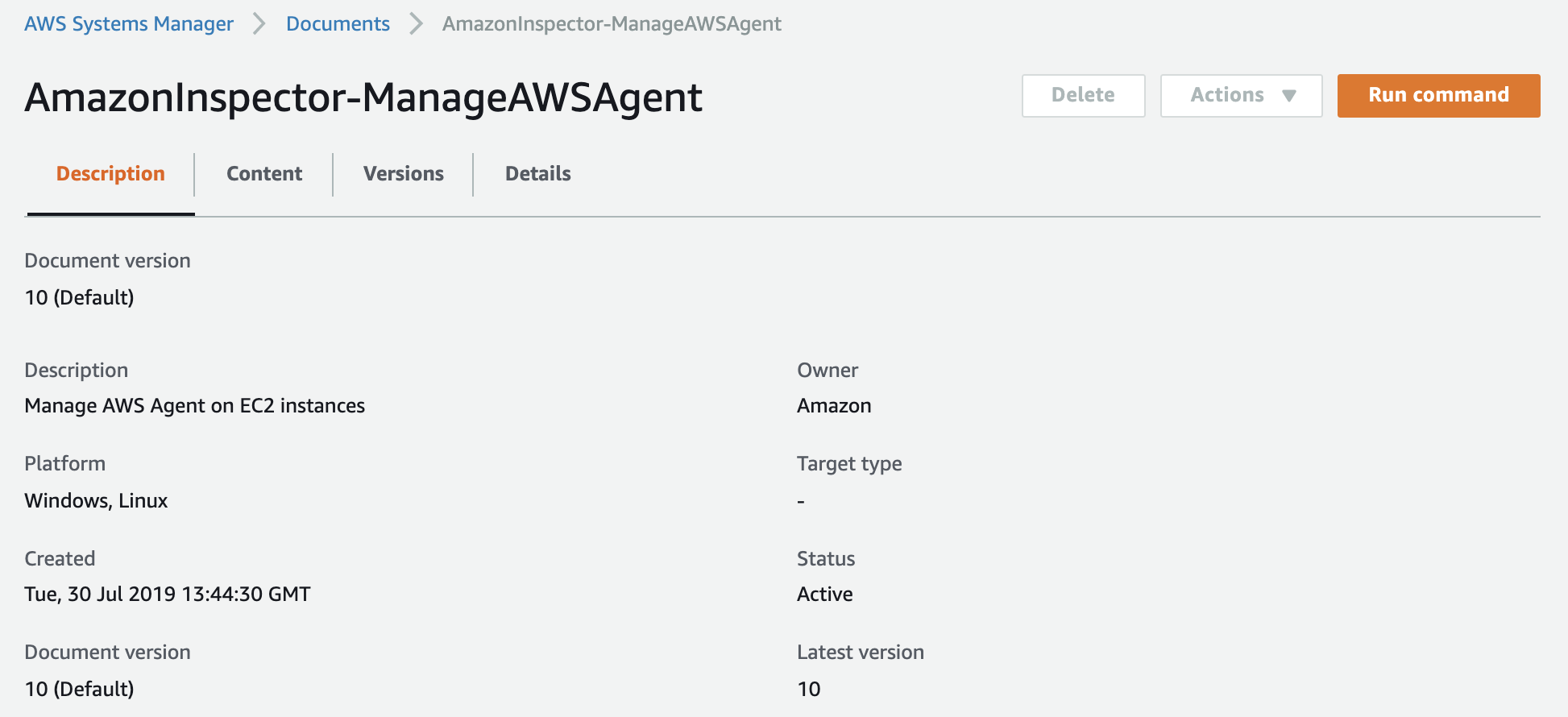Install Amazon Inspector Agent on Multiple EC2 Instances
Question
A company has about 100 Amazon Linux EC2 instances.
You want to use Amazon Inspector to test the security state of applications that run on these instances so that the security exposure, vulnerabilities, and deviations from security best practices are reported. Amazon Inspector needs to be installed before performing the host assessments. Which method can quickly install the Amazon Inspector Agent on all required EC2 instances?
Answers
Explanations
Click on the arrows to vote for the correct answer
A. B. C. D.Answer: D.
Option A is incorrect because a large number of EC2 instances may have to change the AMI with a preinstalled Inspector agent.
This would be time-consuming and not an efficient way to achieve the asks.
Option B is incorrect because installing agents on each machine manually is time-consuming work and not an efficient way to achieve the asks.
Option C is incorrect because users need to maintain Ansible files and playbook to install the inspector agent.
This would be time-consuming and not an efficient way to achieve the asks.
Option D is CORRECT because AWS Systems Manager Run Command can easily install the Inspector agent on selected EC2 instances.
This method should be able to manage multiple instances at the same time.
Reference:
https://docs.aws.amazon.com/inspector/latest/userguide/inspector_installing-uninstalling-agents.html
Amazon Inspector is a security assessment service offered by Amazon Web Services (AWS) that helps users to analyze the security of their applications and infrastructure. To perform assessments using Amazon Inspector, an agent needs to be installed on the target instances.
In this scenario, a company has 100 Amazon Linux EC2 instances, and the question is asking for the method that can quickly install the Amazon Inspector agent on all required EC2 instances.
Let's discuss the given options:
Option A: Use the “Amazon Linux AMI with Amazon Inspector Agent” for the EC2 instances. The Inspector optimized AMI preinstalled the Inspector agent. So, no further actions are required.
This option suggests using the Amazon Linux AMI with Amazon Inspector Agent, which is an Amazon Machine Image preinstalled with the Amazon Inspector agent. This AMI is optimized for running Amazon Inspector assessments and requires no further installation of the agent. This option is a good choice for quickly setting up new instances with the Amazon Inspector agent pre-installed. However, it is not suitable for existing instances that are already running and need to be assessed using Amazon Inspector.
Option B: Use “wget https://inspector-agent.amazonaws.com/linux/latest/install” to install the agent on EC2 instances.
This option suggests using the wget command to download the Amazon Inspector agent installation script and then executing it on the target EC2 instances. This option is a valid approach to install the Amazon Inspector agent on EC2 instances. However, it requires executing the command manually on each EC2 instance, which can be time-consuming and error-prone for a large number of instances.
Option C: Use an Ansible inventory document to manage EC2 instances and an Ansible playbook to install the agent on multiple EC2 instances at the same time.
This option suggests using Ansible, an open-source automation tool, to manage the EC2 instances and install the Amazon Inspector agent on multiple instances at the same time using an Ansible playbook. Ansible uses SSH to communicate with the target instances, which makes it a convenient and secure option for managing instances at scale. This option is a good choice for managing a large number of instances and can help save time and reduce errors.
Option D: Install the agent on multiple EC2 instances using the Systems Manager Run Command. The command document is AmazonInspector-ManageAWSAgent.
This option suggests using the AWS Systems Manager Run Command to install the Amazon Inspector agent on multiple EC2 instances. AWS Systems Manager is a service that enables users to manage their EC2 instances at scale. The Run Command feature allows users to execute commands or scripts on multiple instances simultaneously. This option is a good choice for managing a large number of instances and can help save time and reduce errors.
In conclusion, options C and D are both suitable for quickly installing the Amazon Inspector agent on multiple EC2 instances. Option C uses Ansible, while option D uses the AWS Systems Manager Run Command. Both options can help save time and reduce errors compared to manual installation on each instance. Option A is a good choice for setting up new instances with the Amazon Inspector agent pre-installed, while option B is a valid but less convenient approach for installing the agent manually on each instance.